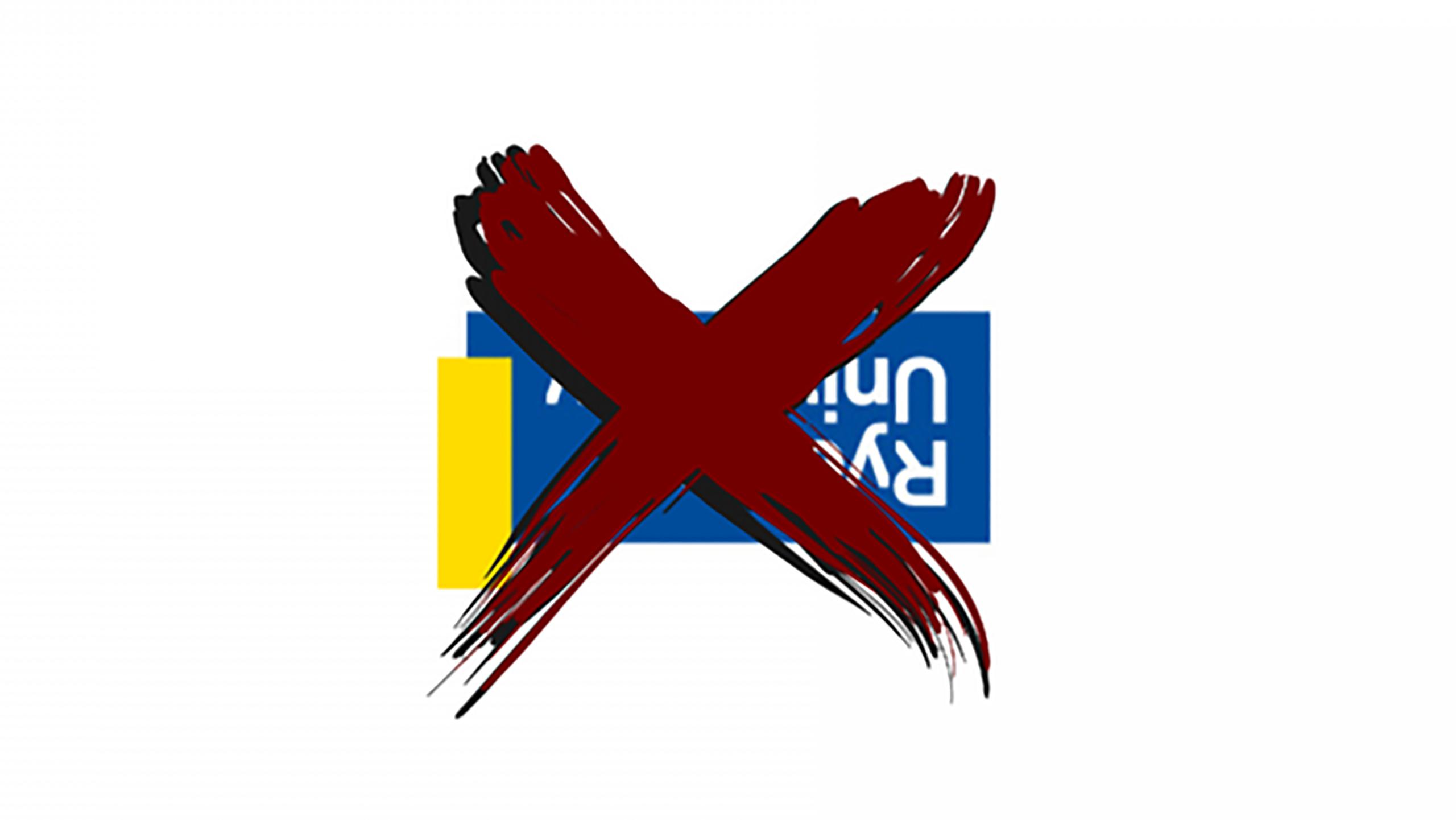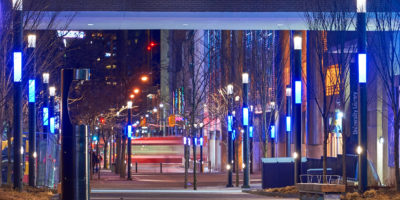By Sarah Tomlinson
This summer, after years of pressuring the university to remove the infamous Egerton Ryerson statue and to change the school’s name, the Indigenous community at Ryerson and campus activists finally saw the statue toppled and beheaded. Although the university said it won’t replace the statue, it hasn’t committed to changing its name yet, which sparked the “X University” movement. If you’re unfamiliar with this issue, here’s a timeline to update you on what’s been happening at the university since 2017:
2017
On June 26, 2017, the Ryerson Students’ Union (RSU) released a statement on their Facebook page criticizing the university’s planned Canada 150 celebrations due to the country’s roots in colonialism, along with a post explaining why a celebration should not take place. While the statement received support from some, it also faced heavy backlash from the wider community.
This sparked tensions within the RSU when then vice-president student life and events Lauren Emberson brought forward a motion requesting all media statements regarding the “Colonialism 150” campaign to be approved by the entire board. Former RSU president Susanne Nyaga withdrew the motion, adding that it would be policing the decisions of then vice-president equity Olson Crow and almost all members had already approved the statement.
On July 1, 2017, Nyaga and Crow presented 11 demands for the university as part of their “Colonialism 150” project, which included removing the Egerton Ryerson statue and changing the university’s name.
Ryerson’s administration agreed to some of the demands—such as creating an Indigenous language course; educating public servants on the history of Indigenous Peoples and residential schooling; an annual Pow Wow; and a research program with multi-year funding to advance the understanding of reconciliation. However, the name and statue remained standing.
2018
In January 2018, Ryerson launched a community-wide consultation summary report in response to the final Truth and Reconciliation Commission report in 2015.
In April that year, the university held a meeting to discuss moving the statue to another location. However, along with Ryerson’s Aboriginal Education Council, it opted for the placement of a Truth and Reconciliation plaque recognizing Egerton Ryerson’s role in Canada’s racist residential school system. The plaque was unveiled on June 25, 2018.
2020
In 2020, Maaz Khan, a 2019 business technology management graduate, started a new petition to remove the statue on June 7, 2020. Since then, it’s received over 10,000 signatures.
On July 19, 2020, the Egerton Ryerson statue on Gould Street was defaced by Black Lives Matter – Toronto (BLM-TO) protesters in an art-based action that called for defunding the police. This happened amid protests against police brutality across all of North America in the aftermath of the police killing of George Floyd. Three of the protesters got arrested but were eventually released after 17 hours of being detained.
A week later, CESAX released an open letter to university president Mohamed Lachemi demanding that the Egerton Ryerson statue be removed from campus. The letter was signed by 19 organizations, 121 full-time faculty and 793 undergraduate students as of November 2020.
The statue was tagged again later that week with green paint. No one claimed responsibility for the second defacement of the statue.
In September, the university created a task force to examine what the school can do to “reconcile the history of Egerton Ryerson.” In an announcement via Ryerson Today, Lachemi said the task force would allow for input from “students, faculty, staff, partners and others.”
2021
In February 2021, the task force, previously called the “Egerton Ryerson Presidential Task Force,” changed its name to “Standing Strong,” a Spirit Name written in Cree as ‘‘Mash Koh Wee Kah Pooh Win.”
However, several Indigenous community members at Ryerson expressed disapproval of the name change, arguing that the task force should’ve used local Indigenous languages instead of the Cree language.
Other issues included the lack of consultation with Indigenous faculty and the use of a Spirit name, which some Indigenous faculty said was inappropriate in an administrative setting because it trivialized and decontextualized Indigenous ceremonies.
In March, the task force began a two-month-long community engagement period regarding the fate of the Egerton Ryerson statue. This was conducted through a survey and a “community tool kit” which allowed community members to conduct their own discussions regarding the statue. In September, the task force is set to submit their recommendations and report to Lachemi.
‘X’ University
On May 3. 2021, Lila Pine, a Mi’gmewi’sgw who teaches at the RTA School of Media, wrote a chapter in a book called “Indigenous Toronto: Stories that Carry This Place”. Pine suggested changing Ryerson’s name to a name that “reflects the values of the Indigenous peoples of this land before settlers arrived.”
A week later, Anne Spice, a Ryerson Faculty of Arts professor and Tlingit member of Kwanlin Dün First Nation, wrote an article for The Globe and Mail about the need to change the university’s name to prevent carrying on his legacy. She called on community members to replace the university’s name with an ‘X’ in their email signatures, CVs and other professional communications.
In response to that article, a group of Indigenous students wrote a letter to Ryerson community members echoing the call to remove Ryerson’s name.
According to the students, the symbolic name change was a response to the university’s slow pace on officially changing the name and removing Egerton Ryerson’s statue on campus.
In an interview with the Eye, Sam Howden, a first-year master’s student in social work, Red River Métis from Treaty 1 territory in Winnipeg and equity coordinator at the Indigenous Students’ Association, said the letter ‘X’ was chosen for its historical significance. According to Howden, Indigenous communities previously used ‘X’ when signing treaties with settlers.
They said ‘X’ is also significant to Black and other marginalized communities who have previously been put into “indentured labour” through colonial governments, giving the example of Malcolm Little who went by Malcolm X, with the ‘X’ signifying his lost African family name.
Statue toppling
At the end of May, the remains of 215 children were found at the former Kamloops Indian Residential School. Since the Kamloops discovery, the number of suspected graves uncovered at the sites of former residential schools rose to more than 1,308 in July.
To commemorate the 215 children found, children’s shoes were placed at the foot of the Egerton Ryerson statue at a sit-in on May 31.
Then on June 6, hundreds of Indigenous and non-Indigenous people marched downtown from the Ontario legislature at Queen’s Park to Egerton Ryerson’s statue to commemorate the 215 children.
Following the march, videos on social media showed protesters tying a rope to the head of the statue and forcibly pulling it down from its pedestal.
At midnight, the statue was beheaded using power tools and taken to the Harbourfront where a small group of protesters shared experiences of colonial violence and held a ceremony with smudging, singing and drumming.
Protestors then tied a rope through the head, dropped it into the lake to “cleanse” it and retrieved it from the water after. The head was taken to 1492 Land Back Lane.
With files from Jacob Dubé, Noushin Ziafati, Annie Arnone, Dania Ali, Raneem Alozzi, Natalie Michie, Edward Djan, Alexandra Holyk, Charlize Alcaraz










Leave a Reply